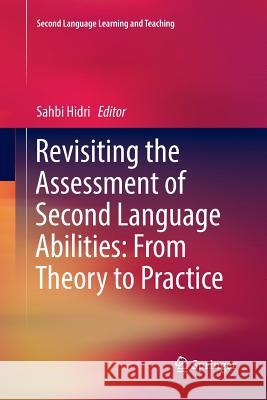Revisiting the Assessment of Second Language Abilities: From Theory to Practice » książka
topmenu
Revisiting the Assessment of Second Language Abilities: From Theory to Practice
ISBN-13: 9783319874197 / Angielski / Miękka / 2019 / 503 str.
Kategorie:
Kategorie BISAC:
Wydawca:
Springer
Seria wydawnicza:
Język:
Angielski
ISBN-13:
9783319874197
Rok wydania:
2019
Wydanie:
Softcover Repri
Ilość stron:
503
Waga:
0.71 kg
Wymiary:
23.39 x 15.6 x 2.64
Oprawa:
Miękka
Wolumenów:
01
Dodatkowe informacje:
Wydanie ilustrowane











